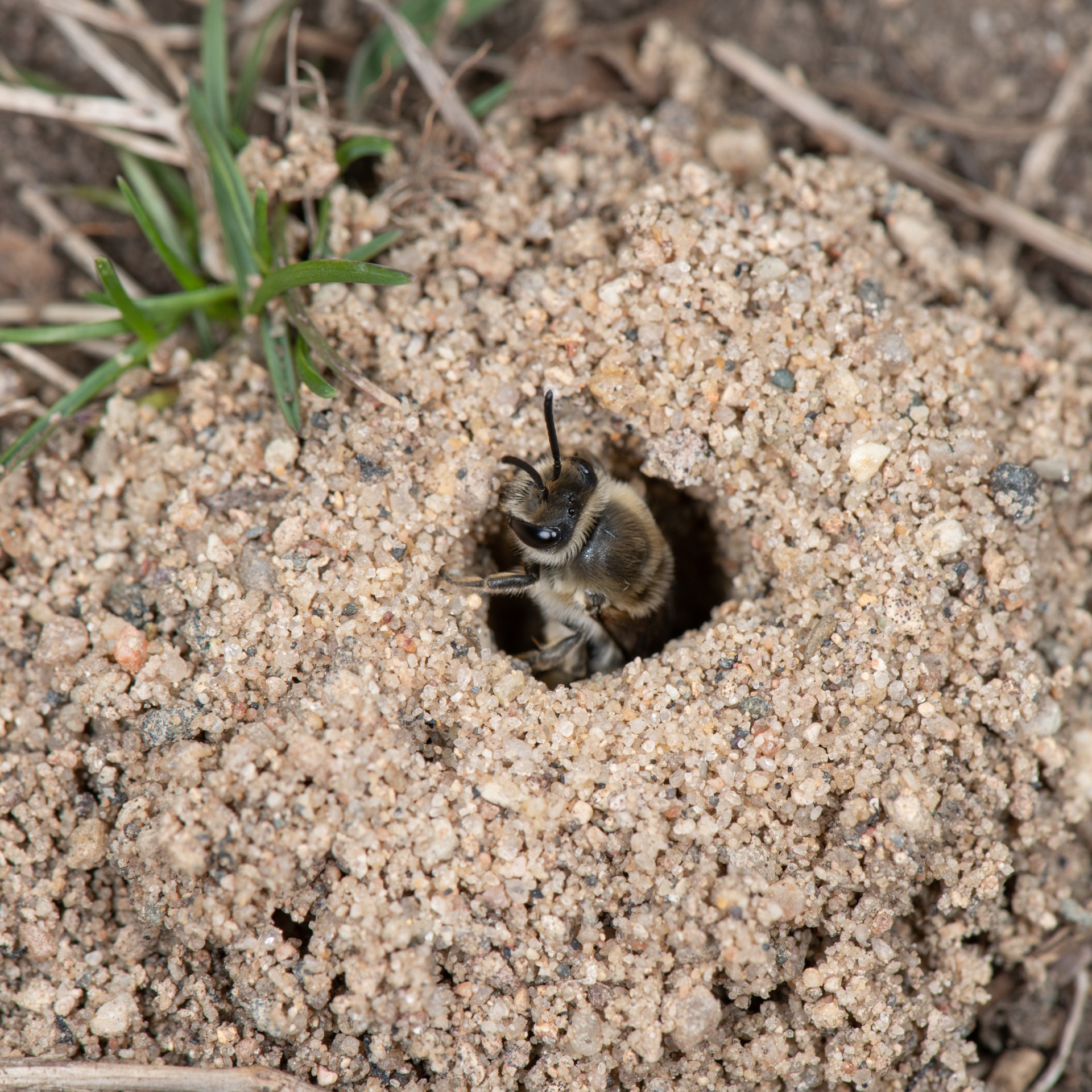Bees, whether social or solitary, build nests. There are various places where one might discover bee nests, and bees are quite resourceful when it comes to the many materials they collect and put to good use when making their homes. Bees use five different styles of nesting, including architects, cavity nesters, ground nesters, renters, and wood nesters.
The Bee Architects
As architects do, bees, who are the architects of their nests, make their own free-standing homes. Architect dwellers use mud, small stones, plants, fur, and resin to build a nest. Because of the variety of materials they use in building, architect nests often look the most decorative. Bird feathers and resin create tiny dark nests with plant fibers and other materials visible outside. Each nest is big enough just for one bee.
Up High and Down Low: Cavity Nests
Many are used to seeing cavity nests because honeybees and bumblebees build these cavities in tree hollows, abandoned burrows from other animals, or other open cavity areas. These nests are the largest, and that is due to the large number of bees in each nest or hive. The cavity dwellers are social bees and often produce honey, which an expert beekeeper must harvest. Hives in an apiary are designed for these species of bees, and although they are "renting" the space, these are not considered renter-dwelling species.
Making Homes in the Ground: Ground Nesters
Approximately 70% of the 20,000 species of bees dig their nests in the ground. Most people think of bees hanging in hives on trees, but most bees are solitary and ground dwellers. An interesting thing about ground-dwelling bee species is that each likes its own kind of soil; some bees prefer sandy soil, some hard-packed clay, and others well-drained and airy. Nests in the ground may be shallow, but not all—some species have nests that go down as deep as ten feet!
Ground nests are made by bees using their mandibles and abdomens, and some species are known to build nests in proximity to other solitary bees in clusters that may have up to 100,000 nests in an area. Although this may sound like a high number of bees in one nest, it is not when compared to a typical honeybee nest, which may have upwards of 60-80K bees in each hive!
Beekeepers Delight: Rent Nesters
What are considered renters in bee dwelling terms are those bee species that take over existing spaces. These spaces are many times created, provided, and maintained by expert beekeepers. These renter bees will also use spaces that are produced naturally, like snail shells or empty nests of other insects. These species of bees include leaf-cutter bees and mason bees. If beekeepers want to attract bees to their apiary, they can create, and place materials used for nesting, including tubes like bamboo, in a roofed enclosure, and bees will use these materials and become a nesting site for bees. Wasps will also take advantage of this convenience and can be determinantal to beehives. Beekeepers must monitor the activity in these rental spaces to ensure bees are not under threat from wasp activity. Wasps want the honey and are capable of completely destroying a beehive. If you have any questions about wasps near beehives, contact your local beekeeper for guidance and advice.
Wood Nesters
Although renters will use available tubes of bamboo and hollowed-out sticks, there are some species that only build in wood materials. These bees use their mandibles to manipulate the wood to construct their nests. As the name would suggest, carpenter bees are one of these wood-dwelling bee species. Carpenter bees are the most likely to build a home in the trim of a structure, like a house or barn. If a beehive ends up in a location that may potentially harm people or pets, contact a professional bee removal company with the experience and tools to remove live bees and relocate them safely and humanely. D-Tek provides the most full-service live bee removal and is always available to help mitigate an unwanted beehive on your property. If a structure must incur damage in order to remove a beehive entirely, D-Tek does all repair work on the same day and guarantees the quality.
Get help with your beehive or bee swarm removal! Call Today 760-224-3040 Or 951-265-8292!
Minding The Nests in You Area
As we are into spring and approaching summer, bee activity will be increasing. It is helpful to be aware of the variety of nesting that may occur and what to look for. Bees continue to top the charts when it comes to importance in the pollination process, and research still reports that bee numbers are declining. California has legislation in place to protect certain bee species, and their survival is something we all need for the environment as well as food on the table.
If you have any questions about bees in your region or nesting on your property, call an expert. Call D-Tek.
Contact D-Tek today, call 760-224-3040 OR 951-265-8292.

